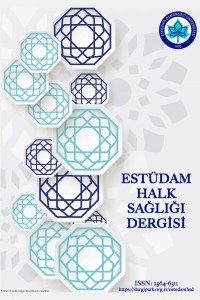
ESTÜDAM Halk Sağlığı Dergisi
Yazarlar: Şeyma KABLAN, Ayşe ARIKAN, Duygu METİN, Muazzez GARİPAĞAOĞLU
Konular:Halk ve Çevre Sağlığı
DOI:10.35232/estudamhsd.664242
Anahtar Kelimeler:Elderly,Malnutrition,Nursing Home,Nutritional status,MNA
Özet: It has been known that the elderly population increases rapidly in our country as in many countries. In old age, adequate and balanced nutrition has a special importance in the improvement of health, quality of life and lenghtening lifespan. This study was conducted to evaluate the nutritional status of 65 years and older people living in the city of Istanbul. A total of 195 individuals, 100 (55 females, 45 males) from their own home and 95 (48 females, 47 males) from different private nursing homes, were included in the study which conducted between August-October 2019, Individuals' demographic characteristics, nutritional status, anthropometric measurements, 24-hour retrospective food consumptions were recorded and Mini Nutritional Assessment (MNA) test was applied to determine malnutrition status. SPSS 18,0 program was used in statistical evaluation of the data. The average age of the individuals living in the home and the nursing home was found to be 71.8±5.8 and 73.8±6.2 years respectively. The mean BMI was 27.1±4.2 kg/m2 at home and 25.1±3.6 kg/m2 at nursing home. It was found that 68% of the individuals living in the home and 46.4% of the people living in the nursing home were slightly obese or obese (p<0.05). The mean energy expenditures of the individuals were found to be 1641.7 ± 282.4 and 1491.1 ± 235.6 kcal respectively in the home and nursing homes (p˂0.05). According to MNA results, malnutrition risk or malnutrition was seen in 25% of the people living in their homes and 52.6% of the people living in the nursing home. As a result, the nutritional status of elderly people living at their homes was found to be better than those living in nursing homes. In order to improve their quality of life and reduce health expenditures, it is important to follow up the elderly at regular intervals and to evaluate their nutritional status.